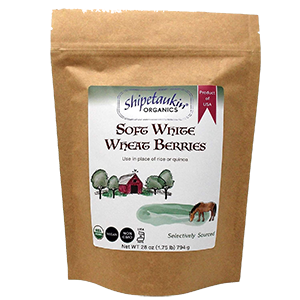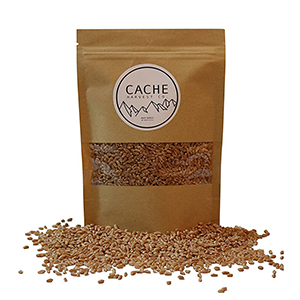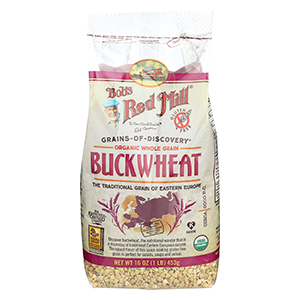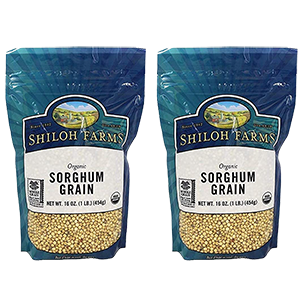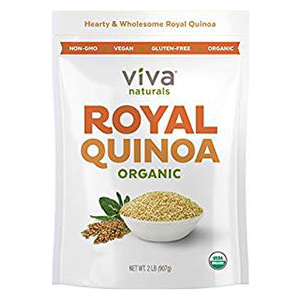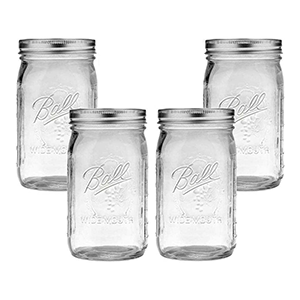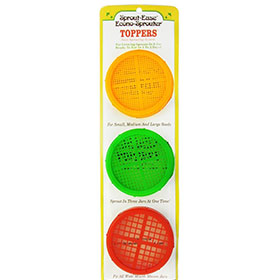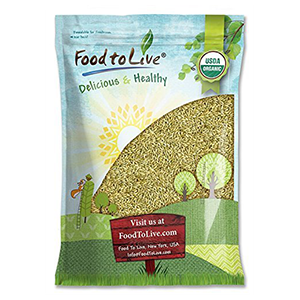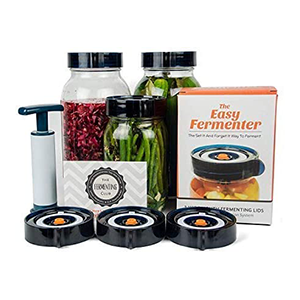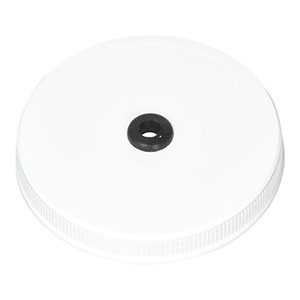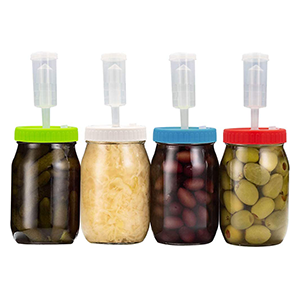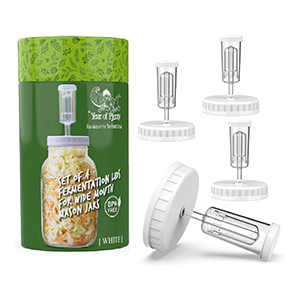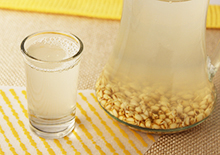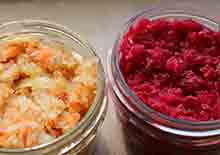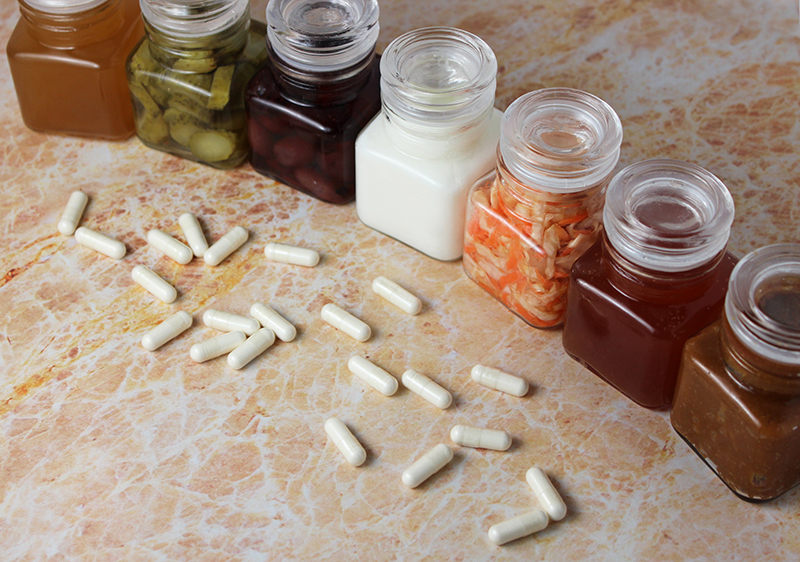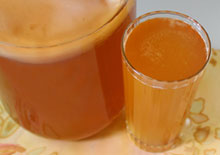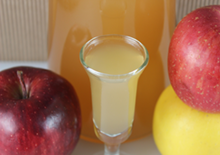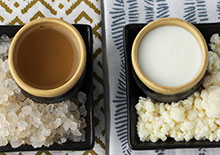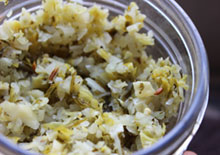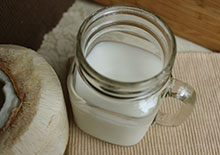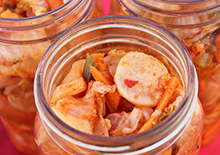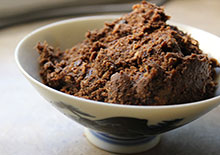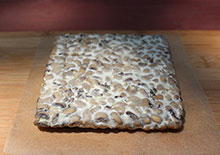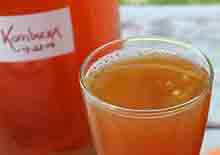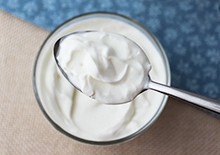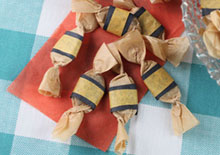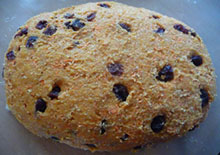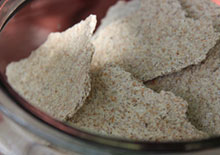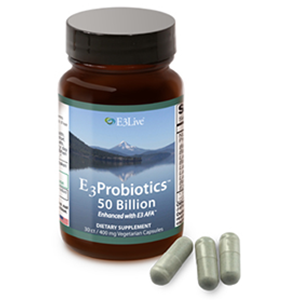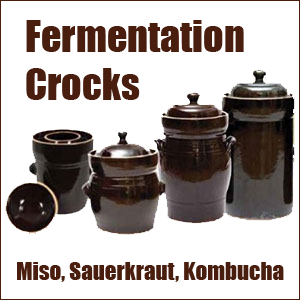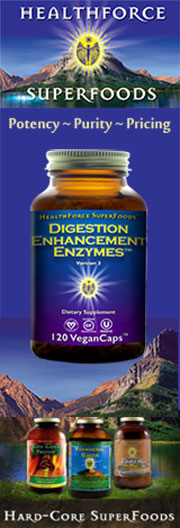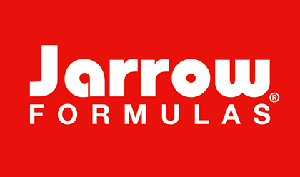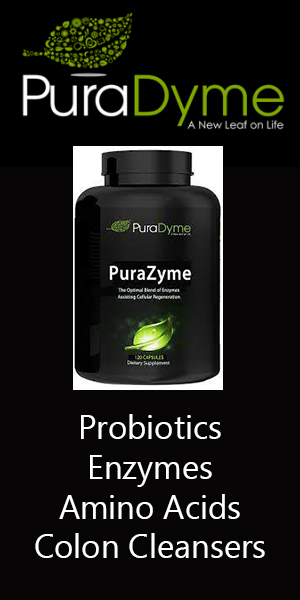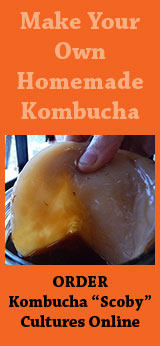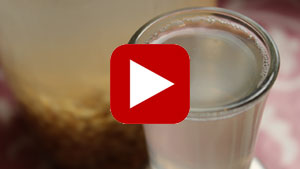- Home
- Fermented Food Recipes
- Rejuvelac
How to Make Rejuvelac, The Probiotic Super Drink
Intro | What is Rejuvelac? | What are Sprouted Grains? | How to Sprout Grains | Rejuvelac Benefits | Can Rejuvelac Go Bad? | To Prevent Spoilage | Recipes | Precautions | Shop
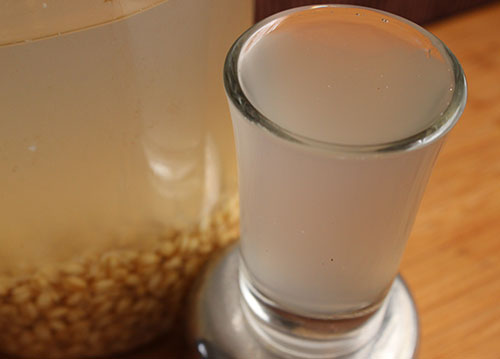
Rejuvelac is a cultured probiotic-rich drink made by fermenting freshly sprouted grains in water. It first became popular in the 1960s under the influence of living food enthusiast Dr. Ann Wigmore, the original founder of the Hippocrates Health Institute.
Born in Lithuania, "Dr. Ann", as she was called, is believed to have acquired the recipe from her Baltic origins. The beverage is closely related to the traditional Romanian drink, called Bors, a fermented wheat bran used to make a sour soup called ciorba.
Table of Contents
Intro | What is Rejuvelac? | What are Sprouted Grains? | How to Sprout Grains | Rejuvelac Benefits | Can Rejuvalac Go Bad? | To Prevent Spoilage | Recipes | Precautions | Shop
Many people since then have been using this slightly tart, lemony-tasting liquid as a digestive-type tonic for its high enzyme content.
Small shot glass size portions are known to be helpful as a natural gentle laxative which can assist in relieving constipation and potential toxic buildup.
It is extremely beneficial to include some kind of fermented foods in the diet on a regular basis. We like to change it up with variety and rejuvelac is a simple, easy to make alternative to other cultured foods and drinks that doesn't require special techniques, culture starters or equipment.
Although you wouldn't think that water sitting around for a couple of days with sprouted grains in it would taste all that great, the fermentation process actually produces a very clean tasting, tangy drink with a citrus-like aroma.
The active enzymes in the cultured water are largely a byproduct of the grain sprouting process. Like the name implies, rejuvelac is "rejuvenating" and is a "super sprout drink", made from these concentrated energizing compounds.
The potent and minutely fizzy strained liquid that results, we have found to be a health-enhancing potion that is mainly beneficial when consumed before or between meals on an empty stomach.
It should really be considered a digestive tonic rather than a beverage you would drink in larger quantities. We usually drink between 2-4 ounces at a time in shot glass size glasses, as drinking too much may cause gastrointestinal upset and/or loose stools.
If you are new to drinking it, definitely start out with a 1oz portion and build up to more over a period of time.
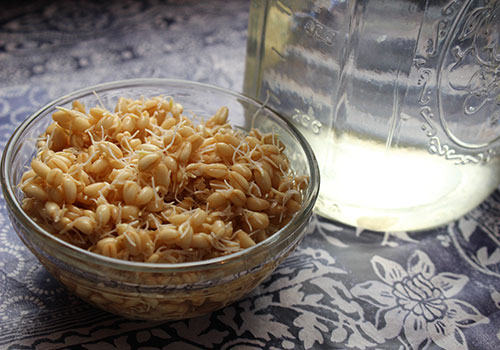 Two Ingredients: Sprouted Grains and Pure Water
Two Ingredients: Sprouted Grains and Pure WaterWhat is Rejuvelac Exactly?
It is essentially the fermentation of sprouted grains in pure water for a 1-3 day duration. Although original methods just soaked the grains in water before making it, these days most all recipes sprout them slightly first.
The idea is that the grain is plump and basically preparing to reproduce itself. A process that activates compounds necessary for the ferment.
It is traditionally made from wheat berries, but can also be produced from other varieties like rye, kamut, barley, buckwheat or quinoa, with each having their own special bouquet of flavors.
Gluten-free Alternatives
For those of you who wish to avoid gluten products or ferments, rejuvelac can also be made from gluten-free grains like quinoa and millet. We have included our quinoa recipe further below on this page.
It is one of those fermented foods that can't usually be purchased
from the health food store, but must be created homemade-style.
Rejuvelac is a bit different than other ferments in that you are not using a specific culture starter, like you would when making kombucha, kefir, sauerkraut, miso and tempeh. It is considered a "wild fermentation" because the beneficial microorganisms needed to successfully culture the water are naturally present on the grains and sprouts themselves.
As we mentioned, the process of fermenting the sprouted grains in water encourages high enzymatic activity but also, as a lactic acid ferment, supports the production of beneficial Lactobacillus bacteria. When consumed, these friendly microbes can further proliferate the gastrointestinal tract and help to balance our gut microbiota.
Rejuvelac is a simple and "old school" culturing technique that is very inexpensive to make. It is sometimes used as a liquid culture starter for other fermented foods, like nut or seed cheeses.
Dr. Wigmore, who also popularized "seed cheese" made with sunflower and pumpkin seeds, used small amounts of rejuvelac to culture her raw seed-based cheeses to produce a cheese-like flavor.
Unlike other cultured foods such as kombucha and kefir, which may contain small amounts of alcohol as a byproduct of fermentation, rejuvelac is considered a non-alcoholic liquid, containing only very minute amounts, nothing more than you would find in a jar of sauerkraut.
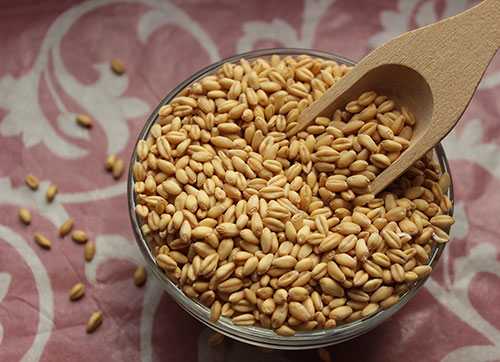
What are Sprouted Grains?
All raw grains, seeds and most nuts will sprout little roots when given the water needed to do so. Soaking them overnight is the best way to ensure that they will sprout or grow little white root hairs from the end of the seeds. This helps activate the lacto-fermentation process required to make rejuvelac.
In the words of Sandor Katz, "When you soak the grain, it begins to swell, setting in motion a series of changes that, given the right conditions, will result in its sprouting into a new plant. At the same time, water also revives the bacteria and fungi that populate the grain's surfaces, and initiates fermentation."
Rejuvelac is much easier to make of course if you are familiar with the seed sprouting process. Many grains and seeds are "sprouted" when growing sprouts, microgreens as well as when making essene bread, sprouted rye crackers or rejuvelac. Sprouting is not all that complicated, but it does take some practice, mostly just keeping up with rinsing and making sure you don't sprout them too long.
The same method is also used to sprout wheat berries for tray-growing wheatgrass. Dr. Ann Wigmore was also one of the first to discover the healing properties of wheatgrass juice, which she used medicinally, along with rejuvelac, with great success in her holistic health care practice.
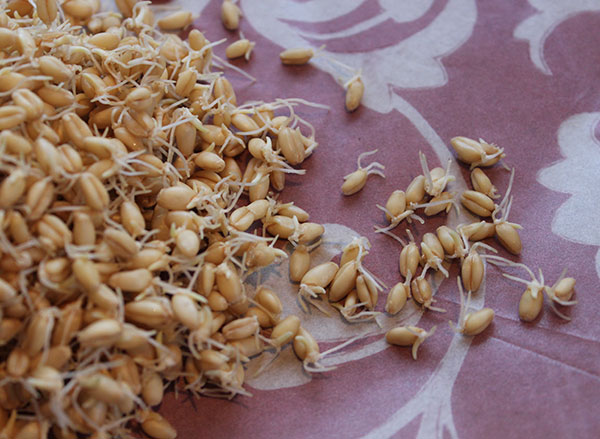 Sprouted Wheat Berries
Sprouted Wheat Berries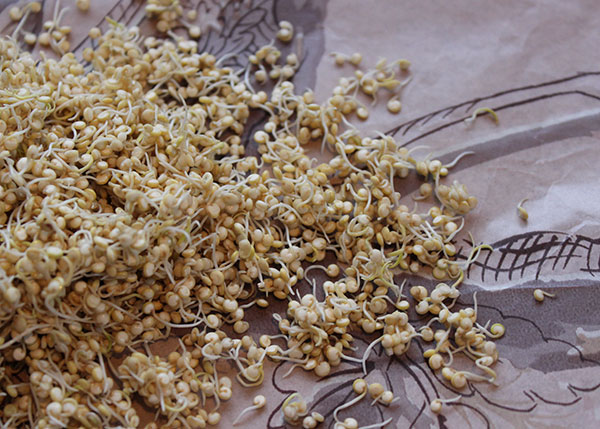 Sprouted Quinoa
Sprouted QuinoaHow to Sprout Grains
Sprouting the grain first before fermentation, while not completely necessary, is highly recommended it as it will only boost beneficial components. The sprouting process will take a few days of preparation before you make your actual recipe, but it is very simple.
First off, you want to use whole, raw, non-GMO and preferably organic grains that have not been heat-treated or irradiated. Once you have some high-quality grains (soft wheat berries or quinoa) for the two recipes on this page, you are ready to make rejuvelac!
Directions for Sprouting Grains:
- Take 1/2C of dry grain and rinse it thoroughly in clean pure water.
- Soak it overnight, or about 8 hours, in a one-quart mason jar with a loose lid.
- Place a clean mesh lid on the top of the jar and strain out the soak water.
- Fill the jar again with pure water, stir and strain again.
- Flip the jar over, with the mesh lid angled downward, into a dish to drain.
- Rinse your jar of grains once a day.
- Watch for little sprouting white hairs after day one, it usually takes between 1-2 days depending on the room temperature and grain variety.
Health Benefits of Rejuvelac
1) Enzyme-Rich Drink and Digestive Aid
2) A Liquid Probiotic Tonic for Intestinal Balance
3) Other Nutritional Components
Enzyme-Rich Drink and Digestive Aid
Consuming lacto-fermented foods, like rejuvelac, can be a valuable asset to overall health and helpful for processing potential leftover byproducts of a low-quality enzyme-less diet.
Poor dietary choices over a period of time can cause toxic buildup in the body and chronic health issues like bloating, constipation, obesity, fatigue and lowered immune response.
Rejuvelac is very high in enzyme content, which is created from the bacteria and yeasts present.
Sprouted grains themselves are known to have very energizing effects on the body, mostly due to their improved level of these sprout-activated enzymes that continue to increase when fermented.
Dr. Johannes Kuhl, a German researcher and author of several books including "Cancer in Check", wrote this about the benefits of lacto-fermented foods:
"The natural lactic acid and fermentive enzymes which are produced during the fermentation process have a beneficial effect on the metabolism and a curative effect on disease. Lactic acid destroys harmful intestinal bacteria and contributes to the better digestion and assimilation of the nutrients. Fermented foods improve the intestinal tract and provide a proper environment for the body's own vitamin production within the intestines."
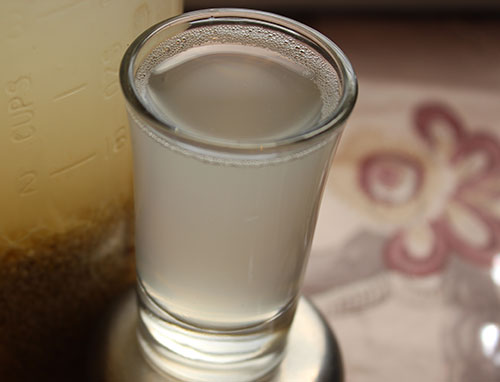
A Liquid Probiotic Tonic for Intestinal Balance
Rejuvelac is a nutritious and energizing probiotic tonic for inoculating the large intestine with friendly Lactobacillus microflora and encouraging the healthy proliferation of good bacteria. It is helpful to consume probiotic supplements and/or fermented foods for this reason on a regular basis and this sprouted wheat berry-based drink is an easy to make inexpensive option.
A healthy balance of intestinal microorganisms should include approximately 80% bacterial group-based species, like Lactobacillus and Bifidobacterium, and 20% of the more acidic fungal group species such as Candida albicans, which are actually beneficial in small amounts. (Source)
Other Nutritional Components
Rejuvelac is known to contain some amino acids, carbohydrates, B vitamins, vitamin C, vitamin E.
Rejuvelac Benefits List:
- Introduces friendly lacto-bacteria into the gastrointestinal tract
- Encourages regular bowel movements
- Energizes the body through enzymatic activity and cleansing actions
- Helps to remove toxins and excess undigested waste material
- Acts as a digestive aid and can increase the absorption of nutrients
Can Rejuvelac Go Bad?
Yes, during the process of fermentation, rejuvelac can spoil and produce an inedible liquid, which means that other unfriendly microbes have taken over the ferment and have dominated the lacto-bacteria present.
This is usually obvious by the presence of a very strong, unpleasant putrid odor. It will also look overly cloudy with possible mold growing on the surface.
You will need to discard it and begin again with clean sanitized equipment. Spoilage often occurs when the atmospheric conditions were either too hot, too humid or both. Ideally, a 70-75°F (21-24°C) temperature is best for optimal results.
Suggestions to Prevent Spoilage
- Use very hot soapy water to clean the jars, lids or any utensils used.
- Thoroughly rinse in hot water to remove all soap residue.
- Purchase quality dry organic grains from a reputable source.
- Rinse grains several times in pure water before soaking them.
- Use clean towels to dry your equipment and a clean cloth, or preferably loose lid on top of the jar with a cloth over it.
- Never use tap water, only pure filtered or distilled water.
- Do not reuse your grains to make a second batch (a commonly employed technique), use fresh sprouted grains only, not leftovers.
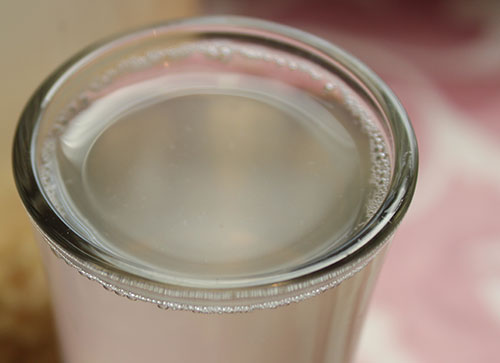
Potential Rejuvelac Contamination
There are some health authorities, like Brian Clement, who warn against the use of rejuvelac because there may be a likelihood of what is labeled as "contamination" in the final product. Not the lethal variety, but other more fungal yeasts, like Saccharomyces, which may be present in small amounts in the cultured liquid.
However, we have found that this is not an unusual phenomenon, as other fermented foods are also known to contain them in small quantities. These types of yeast are found in other ferments, like kefir, and are beneficial in lower volumes (about 20%) as they are in our intestines. (Source)
The Lactobacillus species are hardy strains of microbes and are what is needed to create a successfully fermented product, without them you would not achieve a lacto-fermented end result.
We personally have only experienced positive effects from drinking rejuvelac and feel that we wouldn't have such associated health benefits if other less beneficial species were present in large quantities. Also, if the final liquid outcome looks and tastes pleasant like it should, these are good signs of a lactic acid bacteria-rich fermented drink.
It is a good idea, as suggested, to take precautions when preparing it, making sure all your equipment is thoroughly clean and sanitary to avoid spoilage. In addition, to prevent possible airborne yeast contaminants, it is advised to place a loose lid and clean cloth securely over your jar and culture it in a ventilated, yet clean environment away from dust and foot traffic. We have also successfully used airlock fermentation caps, which is also another option.
Rejuvelac Recipes
1) Traditional Wheat Recipe
2) Quinoa Rejuvelac Recipe
Traditional Rejuvelac Recipe
This is a traditional rejuvelac recipe made with soft wheat berries. Most people sensitive to gluten can easily digest this form of sprouted grain liquid, but for people with severe allergic reactions to gluten or those who have celiac disease, it is best to use other non-glutinous varieties such as our quinoa recipe below.
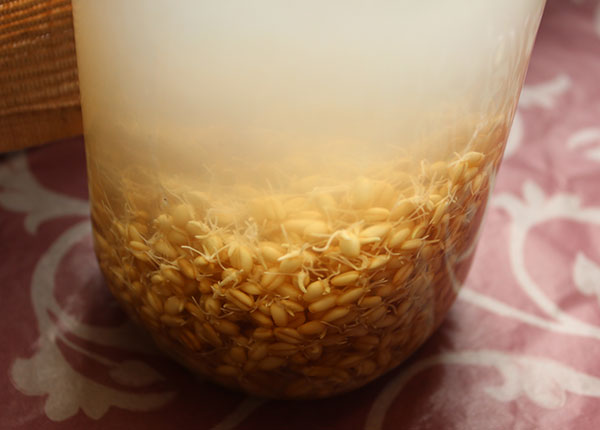
Ingredients:
- 1/2C dry wheat berries
- pure filtered or distilled water
Directions:
- Add the dry wheat berries to a one-quart glass jar.
- Rinse and fill the jar with pure water and soak overnight.
- Strain and rinse the grains, add a mesh lid and sprout them for 1-3 days, or just until white sprouts start to appear. (For details see the previous section How to Sprout Grains)
- Using another clean one-quart jar, add the sprouted grains and cover to the top with pure water.
- Cover the jar with a loose lid or a mesh lid with cloth over the top or use an airlock cap.
- Ferment on a countertop or cupboard space, but keep out of direct sunlight.
- Gently swirl the jar a couple of times a day to move the grains around.
- Allow to ferment for 1-2 days or until it becomes slightly cloudy with some bubbles.
- When it is ready to decant, strain the liquid out and compost the sprouted grains.
- Store in the refrigerator for up to 2 weeks.
Your final fermented liquid should be slightly cloudy with a tangy taste and pleasant citrus-like aroma.
Quinoa Rejuvelac Recipe
Quinoa is a wonderful gluten-free grain to use when making rejuvelac. We recommend using it for your ferment if you are especially sensitive to glutenous grains, like wheat, barley or rye.
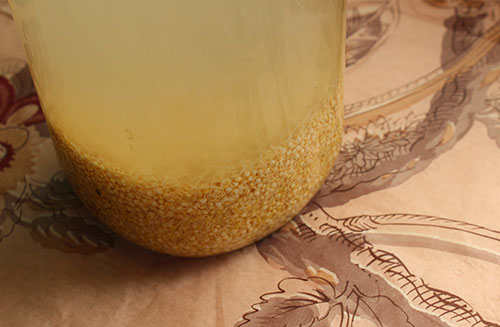
Ingredients:
- 1/2C dry quinoa grain
- pure filtered or distilled water
Directions:
- Add the dry quinoa to a one-quart glass jar.
- Rinse and fill the jar with pure water and soak overnight.
- Strain and rinse the grains, add a mesh lid and sprout them for 1-3 days, or just until white sprouts start to appear.
- Using another clean one-quart jar, add the sprouted grains and cover to the top with pure water.
- Cover the jar with a loose lid or a mesh lid with cloth over the top or use an airlock cap.
- Ferment on a countertop or cupboard space, but keep out of direct sunlight.
- Gently swirl the jar a couple times a day to move the grains around.
- Allow to ferment for 1-2 days or until it becomes slightly cloudy with some bubbles.
- When it is ready to decant, strain the liquid out and compost the sprouted grains.
- Store in the refrigerator for up to 2 weeks.
How to Use
Rejuvelac does agree with most people, but not everyone, so it is good to start out slow with small amounts (2T) to test it out if you are prone to digestive sensitivities.
Drink rejuvelac first thing in the morning as well as before or between meals for optimal results. Again, it is best consumed in smaller quantities rather than large glasses, especially if you are new to drinking it.
Precautions:
It is best to avoid fermented foods and drink if you have severe allergies to molds. Consult your healthcare professional before using rejuvelac if you are pregnant, nursing, have a serious medical condition or are taking prescribed medications.
Shop Related Products (About Affiliates & Amazon Associate Paid Links)
Affiliate Disclaimer: This section contains affiliate product links. If you make a purchase through one of our recommended links, we will receive a small commission at no additional cost to you. Thanks for the support!

